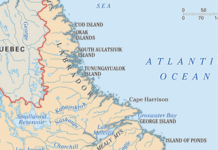The European Commission has presented new measures in response to the rise in electricity prices across Europe. The measures are also strongly influenced by the Russian invasion of Ukraine.
The commission wants Europe to accelerate renewables deployment to increase energy security and in particular reduce its dependency on fossil fuel imports from Russia. The commission presented the RePowerEU plan with a faster expansion of wind energy and other renewables at its core.
The European Commission reiterates the central role of renewables in ensuring Europe’s energy security. Europe still imports 58% of its energy – mostly fossil fuels and often from countries posing serious geopolitical risks. Wind energy is home grown and cheaper than imported fossil fuels. Every wind farm contributes to making Europe less reliant on fossil fuel imports.
The European Union wants wind energy to be 50% of its electricity by 2050. The commission suggests that another 30 GW of wind energy, on top of the 450 GW that its decarbonization scenarios foresee, could be deployed by the end of 2030.
Crucially, all of this depends on permitting, comments WindEurope. The European Commission acknowledges the fundamental need to simplify the permitting of new renewable energy projects. Improving permitting is “a matter of urgency” to Europe’s energy transition. Long and overly complex permitting procedures are the main bottleneck to the expansion of wind energy. The EU is currently building only around half of the new wind farms that it needs to build to deliver its 40% renewable energy target. The European Commission will present Guidance to National Governments on how to improve permitting in May 2022.
“More than ever Europe now needs to tap into its massive wind energy resources,” says WindEurope CEO Giles Dickson. “Speeding up the growth of wind is central to achieving energy security. And we need to do it with European technology. Europe must do everything to preserve our world-leading wind energy supply chain. Accelerate permitting. Have smarter wind auctions that factor in wind energy’s contributions to a robust, resilient and circular economy. And boost research and development.”
The commission paper sets out measures aimed to mitigate the impact of high electricity prices on vulnerable households and businesses. National Governments should priorities the use of the increased carbon price and tax revenues that result from high energy prices to shield vulnerable consumers, Dickson adds.





If we are serious about the climate and clean energy we had best get serious about nuclear energy. While individually these turbines occupy little ground, together they occupy and disrupt considerable acreage. Even when wind and solar are working at full “capacity” they must be connected to a central point, from all those smaller points, before distribution. Both are short lived in comparison to present energy sources, waste is difficult and dangerous to remove or recycle. Please do your homework, wind and solar are not going to carry their own water. It has taken the United States fifteen years to build the latest… Read more »